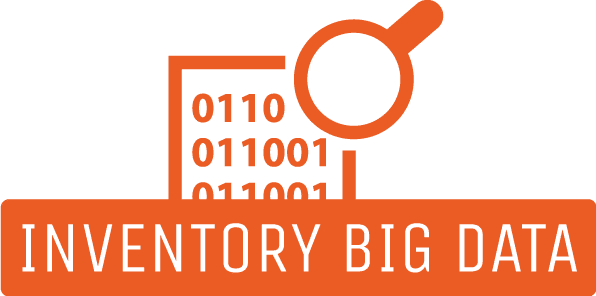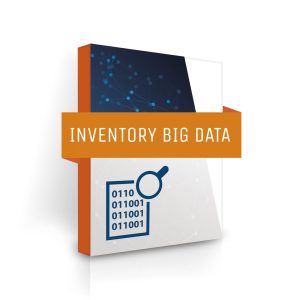Improving Logistics Efficiency
Explore how to enhance logistics and distribution efficiency by optimizing transportation and warehousing. Learn key strategies to reduce costs, improve delivery times, and increase customer satisfaction. Discover the role of technology and cross-department collaboration in creating a resilient and efficient supply chain network.
Description
Logistics and Distribution: Enhancing Transportation and Warehousing Efficiency
In the realm of supply chain management, logistics and distribution play a pivotal role in ensuring the smooth flow of goods from suppliers to customers. Enhancing transportation and warehousing efficiency is critical for reducing costs, improving delivery times, and maintaining high levels of customer satisfaction. This article explores the importance of logistics and distribution, identifies key challenges, and presents strategies to optimize transportation and warehousing operations.
The Importance of Logistics and Distribution
Logistics and distribution are fundamental components of the supply chain, encompassing the movement, storage, and handling of goods. Efficient logistics and distribution systems offer several benefits:
- Cost Reduction: Streamlining transportation and warehousing processes helps minimize operational costs.
- Improved Delivery Times: Efficient logistics ensure timely delivery of goods, enhancing customer satisfaction.
- Inventory Management: Optimized warehousing practices contribute to better inventory control and reduced stockouts.
- Competitive Advantage: Companies with superior logistics capabilities can differentiate themselves in the market.
Key Challenges in Logistics and Distribution
- Rising Transportation Costs
- Fuel prices, labor costs, and regulatory changes can drive up transportation expenses.
- Solution: Implement fuel-efficient practices, negotiate better rates with carriers, and leverage technology for route optimization.
- Complex Supply Chains
- Globalization has increased the complexity of supply chains, making logistics management more challenging.
- Solution: Use advanced supply chain management software to manage complexity and enhance visibility.
- Warehouse Space Utilization
- Inefficient use of warehouse space can lead to higher costs and operational inefficiencies.
- Solution: Implement space-saving storage solutions and warehouse management systems (WMS) to optimize space utilization.
- Last-Mile Delivery
- Last-mile delivery is often the most expensive and challenging part of the logistics process.
- Solution: Explore alternative delivery methods, such as local distribution centers and crowdsourced delivery services.
- Technological Integration
- Integrating new technologies into existing logistics systems can be difficult and costly.
- Solution: Adopt scalable technologies and ensure proper training for staff to maximize the benefits of technological advancements.
Strategies to Enhance Transportation Efficiency
- Route Optimization
- Objective: Minimize travel distance and time to reduce transportation costs.
- Methodologies: Use route planning software, GPS tracking, and real-time traffic data to optimize routes.
- Benefits: Lower fuel consumption, reduced travel time, and improved delivery reliability.
- Fleet Management
- Objective: Efficiently manage a fleet of vehicles to ensure optimal performance.
- Methodologies: Implement telematics systems, regular maintenance schedules, and driver training programs.
- Benefits: Increased vehicle lifespan, lower maintenance costs, and enhanced driver safety.
- Collaboration with Carriers
- Objective: Build strong relationships with carriers to ensure reliable and cost-effective transportation.
- Methodologies: Negotiate long-term contracts, share performance data, and collaborate on continuous improvement initiatives.
- Benefits: Improved service levels, better rates, and stronger partnerships.
- Sustainable Practices
- Objective: Reduce the environmental impact of transportation activities.
- Methodologies: Adopt green logistics practices such as using alternative fuels, optimizing load capacity, and reducing empty miles.
- Benefits: Lower carbon footprint, cost savings, and enhanced corporate reputation.
Strategies to Enhance Warehousing Efficiency
- Warehouse Layout Optimization
- Objective: Design an efficient warehouse layout to streamline operations.
- Methodologies: Use data analysis to design optimal storage layouts, implement zone picking, and reduce travel time within the warehouse.
- Benefits: Increased productivity, reduced handling time, and better space utilization.
- Automated Systems
- Objective: Automate repetitive tasks to increase efficiency and accuracy.
- Methodologies: Implement automated storage and retrieval systems (AS/RS), conveyor belts, and robotic picking systems.
- Benefits: Reduced labor costs, increased accuracy, and faster processing times.
- Inventory Management Systems
- Objective: Maintain optimal inventory levels and improve accuracy.
- Methodologies: Use warehouse management systems (WMS) and inventory tracking technologies such as RFID and barcoding.
- Benefits: Better inventory control, reduced stockouts, and improved order fulfillment rates.
- Cross-Docking
- Objective: Minimize storage time and speed up the flow of goods.
- Methodologies: Implement cross-docking practices where incoming goods are directly transferred to outgoing shipments with minimal storage.
- Benefits: Reduced storage costs, faster order fulfillment, and improved inventory turnover.
- Lean Warehousing
- Objective: Eliminate waste and improve efficiency in warehouse operations.
- Methodologies: Apply lean principles such as 5S, Kaizen, and value stream mapping to identify and eliminate waste.
- Benefits: Increased efficiency, reduced costs, and improved employee morale.
Implementing Technology in Logistics and Warehousing
- Internet of Things (IoT)
- Objective: Enhance visibility and control over logistics and warehousing operations.
- Applications: Use IoT devices for real-time tracking of goods, monitoring warehouse conditions, and predictive maintenance.
- Benefits: Improved visibility, proactive issue resolution, and better decision-making.
- Artificial Intelligence (AI)
- Objective: Leverage AI to optimize logistics and warehousing processes.
- Applications: Use AI for demand forecasting, route optimization, and warehouse automation.
- Benefits: Increased accuracy, efficiency, and scalability.
- Blockchain Technology
- Objective: Improve transparency and security in the supply chain.
- Applications: Use blockchain for tracking the provenance of goods, securing transactions, and reducing fraud.
- Benefits: Enhanced traceability, improved trust, and reduced risk.
Enhancing transportation and warehousing efficiency is vital for optimizing logistics and distribution operations. By addressing key challenges and implementing effective strategies, companies can reduce costs, improve delivery times, and maintain high levels of customer satisfaction. Embracing technology and fostering cross-department collaboration are essential steps towards achieving these goals. Through continuous improvement and innovation, businesses can create a resilient and efficient logistics and distribution network that supports their long-term success.
Additional information
| Publication | |
|---|---|
| Department | Supply Chain |
| Level | Director |






